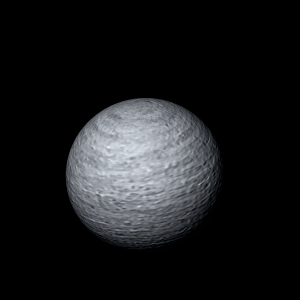|
|
Space Astro
|
Info for exoplanet "Jokya"
| Scientific (actual) data |
|---|
| Name | HAT-P-17 b |
| Planet status | Confirmed |
| Planet mass | 0.571 |
| Radius | 0.98 |
| Orbital period | 10.3385 |
| Semi major axis | 0.0828 |
| Orbit eccentricity | 0.346 |
| Inclination | 89.35 |
| Angular distance | 0.00098 |
| Discovered | 2010 |
| Updated | 2024-08-02 |
| Omega | 201 |
| Tzero tr | 2458720 |
| Impact parameter | 0.24 |
| K | 58.4 |
| Temperature (kelvin) | 804 |
| Publication | Published in a refereed paper |
| Detection type | Primary Transit |
| Mass measurement type | Radial Velocity |
| Radius measurement type | Primary Transit |
| Star name | HAT-P-17 |
| Right ascension | 324.54° |
| Declination | 30.49° |
| Mag v | 10.54 |
| Star distance | 90 |
| Star metallicity | 0 |
| Star mass | 0.857 |
| Star radius | 0.837 |
| Star sp type | K |
| Star age | 7.8 |
| Star temperature | 5246 |
| Wikipedia article | HAT-P-17 b |
Back
| |
| Fictional info (?) |
|---|
| Suggested name | Jokya |
| Planet type | Warm gas giant |
| It is a warm gas giant planet with a mass one-thousandth that of HAT-P-17, but two-and-a-half times that of all the other planets in its solar system combined.
It is radically different from Earth in other respects.
tricky journey. |
| Atmosphere | Krypton | 35% |
| Carbon dioxide | 32% |
| Hydrogen deuteride (HD) | 27% |
| Argon | 2.8% |
| Methane | 2.3% |
| Ozone | 0.16% |
| 2H2O | 0.14% |
| Water vapor | 0.058% |
| Carbon monoxide | 0.00098% |
| Atmospheric pressure | 30 bar |
 |
| No known satellites |
| Google search for Jokya |
|
Website by Joachim Michaelis
|
|
|
|